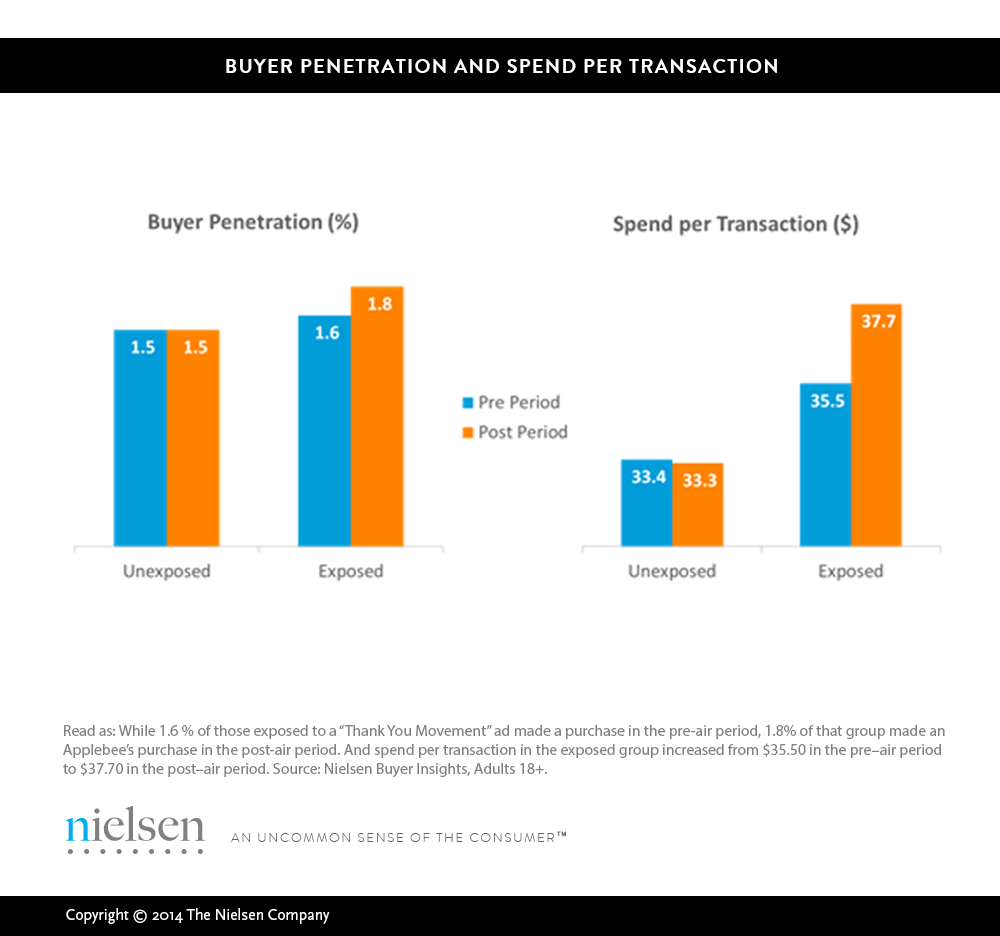There is no magic formula for creating television ads that will stand out and pull audiences in, but there are ways to increase the odds of success—even when the audience represents a very small subset of the general population. Engaging with TV audiences is no easy feat these days, and the real key to success involves truly knowing an audience, no matter how small.
For example, members of the U.S. military and their families represent a very specific portion of the population—one that’s also very engaged as a consumer demographic. And given the specific characteristics of these consumers, savvy marketers know that reaching and engaging them requires differentiated strategies and messages that are just as unique as the consumers are.
While some brands include military-focused advertising throughout the year, many amplify their messages around holidays like Veterans Day and the Fourth of July—when the country’s focus on soldiers, their families and veterans is more pronounced than at other times of the year.
Engaging Through an Emotional Connection
To better understand reach and resonance of military-themed TV ads, Nielsen recently looked at a series of campaigns from Walmart, Applebee’s and two military support organizations. Overall, the ads Nielsen reviewed scored better in terms of ad memorability, brand communication and/or message recognition than the other ads that ran. They also scored higher in terms of ad appeal. Overall, the ads were able to break through the clutter with their strong use of emotion, and the most successful ads in terms of resonance showed service men and women being reunited with their kids, parents and significant others.
Walmart, which began a commitment on Memorial Day 2013 to hire 100,000 veterans over a five-year period, uses its marketing and advertising to back its career and recruitment efforts. WalMart aired three military-themed ads more than 1,200 times in 2013 and 2014.
One spot focused on troops returning home and reuniting with loved ones; one emphasized finding “service to our country beautiful”; and one stressed the company finding value in employing veterans. Walmart spent an estimated $7.8 million to air the three ads at specific intervals around Memorial Day and Veterans Day between Jan. 1, 2013, and July 1, 2014.
WALMART MILITARY AD RECALL
| Ad Memorability | Brand Communication | Message Recognition | Ad Appeal | |
|---|---|---|---|---|
| Walmart Military-Themed Ads | 52% | 40% | 29% | 25% |
| Walmart Norms | 46% | 30% | 23% | 15% |
| Index | 113 | 133 | 126 | 167 |
| Read as: 52% of viewers recalled the content of Walmart military ads, which was 13% more frequent than a typical Walmart ad during the same period. 40% of viewers recalled the content of the Walmart military ads in addition to the brand. 29% recalled the content of the ads, the brand and identified the correct messaging and 25% recalled the content of the ads, the brand and liked the ads a lot or somewhat. Source: Nielsen TV Brand Effect, based on survey responses from Jan. 1, 2013-July 1, 2014, Adults 18+. |
Applebee’s has also found success with military-themed TV ads. And not only has Applebee’s made an effort to acknowledge service men and women in its advertising, it uses its ads to let veterans know they can eat for free on Veterans Day as a way to thank them for their valued service.
Between Oct. 28, 2013, and Nov. 16, 2013, Applebee’s ran its “Thank You Movement” ad more than 700 times reaching 43% of the total population. By emphasizing how people think about dedication and sacrifice and conveying a strong sense of thanks, the ad outperformed Applebee’s non-military-themed ads that aired between Jan. 1, 2013, and July 1, 2014.
APPLEBEE’S MILITARY AD RECALL
| Ad Memorability | Message Recognition | Ad Appeal | |
|---|---|---|---|
| Applebee’s Military Ad | 21% | 19% | |
| Applebee’s Norms | 20% | 14% | |
| Index | 107 | 105 | 136 |
| Read as: 19% of respondents liked the Applebee’s military ad, which was 36% more than a typical Applebee’s ad during the same period. 21% recalled the content of the Applebee’s military ad, the brand and correctly identified the messaging, and 19% recalled the content of the ad, the brand and liked the ad a lot or somewhat. Source: Nielsen TV Brand Effect, based on survey responses from Jan. 1, 2013-July 1, 2014, Adults 18+. |
In addition to examining how the ad resonated with people, Nielsen evaluated how consumers responded to the ad with their wallets. Among those exposed to the “Thank You Movement” campaign, buyer penetration and spend per transaction both increased between the ad’s pre-air period and the post-air period in the month after the campaign. Comparatively, the unexposed group remained flat in both measures during the same periods.

From Military for the Military
Big corporations and national brands aren’t the only ones vying for the attention of consumers interested in or invested in the military. While military support organizations are clear advocates, their challenges to stand out and cut through the media fragmentation are no different from those of any other organization.
In looking at messages from support organizations across the TV ad landscape over the past year, two campaigns stood out in terms of reach and ad effectiveness: one was launched by the United Services Automobile Association (USAA) and the other came from the Wounded Warrior Project, a nonprofit group that offers programs, services and events for wounded veterans of the military on or after Sept. 11, 2001.
To engage its audience, USAA aired its messages most heavily during drama and sports programming, and its most effective ads featured military families and kids. Ads that include family members thanking a relative who has served or is serving in the military scored the highest.
The Wounded Warrior ads focus on highly emotive messaging conveyed through military service men and women in the context of their duties and the impact of their roles on their families. The Wounded Warrior spots aired less frequently than many of the other military-themed ads that Nielsen examined, suggesting that the creativity and power of the content is what drove ad engagement rather than relying on frequency to drive resonance and memorability.
MILITARY ORGANIZATION AD RECALL
| Ad Memorability | Brand Communication | Message Recognition | Ad Appeal | |
|---|---|---|---|---|
| USAA Ads | 45% | 22% | 23% | |
| Wounded Warrior Project Ads | 39% | 32% | 24% | |
| TV Brand Effect Norms | 44% | 26% | 20% | 14% |
| Read as: 54% of viewers recalled the content of USAA ads; 45% of viewers recalled the content of the USAA ads in addition to the brand; 22% recalled the content of the ads, the brand and identified the correct messaging; and 23% recalled the content of the ads, the brand and liked the ads a lot or somewhat. Source: Nielsen TV Brand Effect, based on survey responses from Jan. 1, 2013-July 1, 2014, Adults 18+. |
(Under)stand and Deliver
Military consumers have different habits than the overall population, and marketers need to be able to differentiate when engaging with them by understanding their media and consumption habits. That means knowing things like 64.2% of all military consumers make purchases at home improvement stores, as well as what type of home improvement ads resonate with them. And it’s not simply about understanding national trends.
Military consumers are as diverse as any other American group, and there isn’t one message alone that’s going to resonate with a group made up of many subgroups. For example, almost 40% of active-duty consumers are non-Caucasian, which is well above the 23.7% of the overall U.S. population that’s non-Caucasian. So in that respect, combined with the numerous forms of media and platforms that all consumers experience in a given day, reaching and resonating with a select subgroup hinges on navigating a clear path with effective messaging to a receptive and engaged audience.
Methodology
The insights from this article were derived from four different data sources: data referencing advertising occurrences and expenditures was derived from Nielsen Monitor+; data referencing ad reach was obtained by uploading a custom ad schedule to Nielsen NPOWER; data referencing ad recall and resonance is based on survey responses from the Nielsen TV Brand Effect database; and data discussing sales lift comes from Nielsen Buyer Insights.



